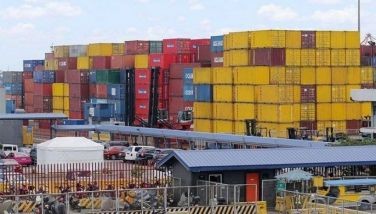Biden unveils $1.9 trillion economic plan for US recovery

WASHINGTON, United States — US President-elect Joe Biden will propose injecting $1.9 trillion into the US economy when he takes office next week, as evidence mounts that the recovery from the sharp downturn caused by coronavirus disease-2019 (COVID-19) is flagging.
With his fellow Democrats narrowly controlling both houses of Congress, Biden has a shot at passing what would be the third massive pandemic aid package.
Dubbed the American Rescue Plan, the proposal includes a host of measures aimed at revitalizing the world’s largest economy, senior officials in his incoming administration said on Thursday.
Biden proposes raising the federal minimum wage to $15 an hour, aiding struggling state and local governments, safely reopening schools, rolling out a massive COVID-19 vaccination campaign and raising the size of stimulus checks Congress approved last month.
“We are in a race against time, and absent additional government assistance, the economic and public health crises could worsen in the months ahead; schools will not be able to safely reopen; and vaccinations will remain far too slow,” a campaign document warned.
Top Senate Democrat Chuck Schumer and House Speaker Nancy Pelosi embraced Biden’s plan, vowing to put it before lawmakers. “We will get right to work to turn President-elect Biden's vision into legislation that will pass both chambers and be signed into law,” they said in a joint statement.
But this is just the first step, and the officials said Biden intends to present a second “recovery” plan to lawmakers soon after his inauguration on Wednesday to spur hiring and fight climate change.
The government on Thursday reported a spike in new jobless claim filings in the first week of 2021 to nearly a million, its highest level since August, while official data last week showed the economy shed jobs in December.
Uncertain path
Biden will take office after a tumultuous transition that saw violent a violent mob invade the US Capitol, egged on by President Donald Trump, as lawmakers were meeting to certify the Democrat's election victory.
His stimulus proposal builds on 2 massive relief packages Congress approved in 2020, and both increase and extend through September unemployment benefits that have helped tens of millions of people pay their bills after losing their jobs during the pandemic.
Biden’s plan however also includes $350 billion in funding to state and local governments, which Republican lawmakers blocked throughout last year.
Also potentially challenging is the president-elect’s move to increase the size of stimulus checks Americans received in the December package to $2,000, which would fulfill a campaign promise.
But with only the slimmest of majorities in Congress— including an evenly split Senate where Vice President-elect Kamala Harris could have a tie-breaking vote— Democrats will have to woo some Republicans if anyone in their party breaks ranks.
One Democratic senator has already expressed hesitation over increasing the payments, but earlier this week Republican Senator Marco Rubio told Biden he would back the additional aid.
The proposal also calls for $160 billion to fight COVID-19 including through a national vaccination campaign, and $170 billion for schools, with the goal of getting most institutions serving kindergarten through eighth grade open in the first 100 days of his administration.
Would it work?
Prior to the release of the specifics, Michael Feroli of JP Morgan predicted Congress could pare Biden’s plan down to the $900 billion range, matching the measure approved last month.
Even the smaller amount would boost GDP growth this year to 5.3% and in 2022 to 2.6%, he said, a “remarkable expected turnaround” aided also by negligible inflation and the Federal Reserve's maintenance of low borrowing rates.
Biden’s proposal also extends a moratorium on evictions, expands tax credits for low-income workers and helps pay for childcare for working parents.
It also includes flexible credits and grants for small businesses that are major employers and have struggled to survive after states tightened business restrictions to stop COVID-19 from spreading.
- Latest
- Trending




























